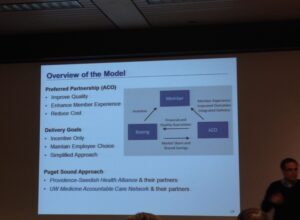The Purple Health Plan is supposed to be a “moderate” plan for health reform–purple is after all a mix of red and blue. The plan is endorsed by five Nobel laureates. So what is the Purple Health Plan? Key provisions of the plan include the following:
- All Americans receive a voucher each year to purchase a standard plan from the private-plan provider of their choice.
- Vouchers are individually risk-adjusted; those with higher expected healthcare costs, based on documented medical conditions, receive larger vouchers.
- Participating insurance companies providing standard plans cannot deny coverage.Americans choose doctors and hospitals included in the standard plan they choose.
- Plan providers offer supplemental plans to their participants and cannot deny supplemental insurance coverage to their participants.
- The government (federal and state) ends the tax exclusion of employer-provided health insurance premiums.
- Like all other Americans, Medicare, Medicaid, and health exchange participants are covered by the Purple Health Plan subject to appropriate transition provisions.
- Each year a panel of doctors sets the coverages of the standard plan subject to a strict budget, namely that the total cost to the government of the vouchers cannot exceed 10 percent of GDP.
Where did these Nobel Laureates come up with such an idea? Would it work in practice? It turns out, this basic framework has already been implemented in Switzerland. I have already written about the Swiss system here, here and here. One of this plan’s drawback is that risk adjustment will never be exact and adverse selection will always occur to varying degrees. In addition, believing that a panel of doctors will conserve resources and not simply advocate an expansion benefits to their particular specialties seems a bit naive from my point of view. Overall, however, I believe that this proposal is eminently reasonable.






